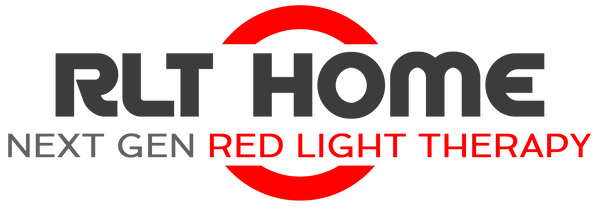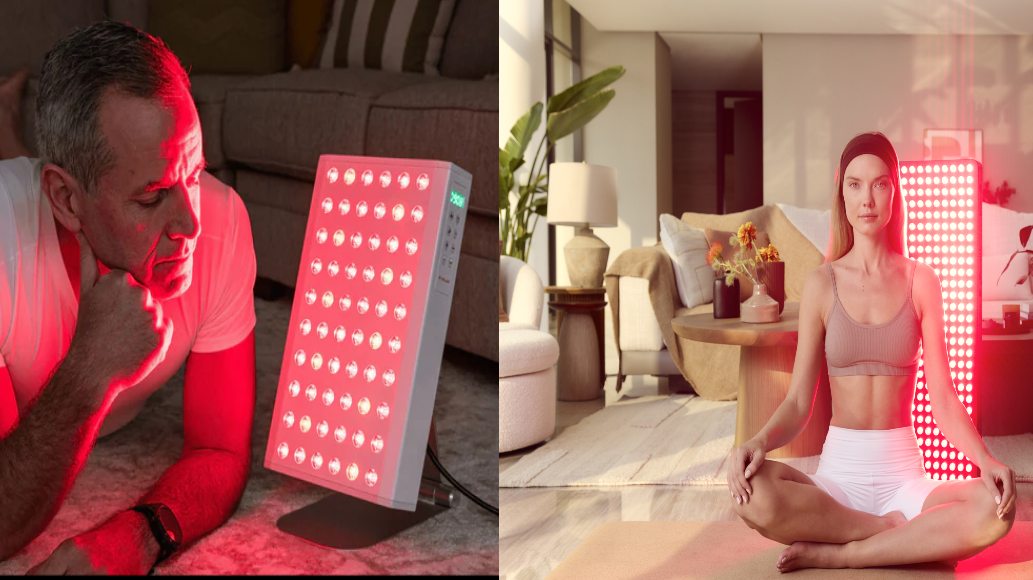Table of Contents
Cheap vs. Expensive Red Light Therapy: Is There a Difference?
Red light therapy is gaining popularity as a solution to numerous issues like skin renewal, curing certain medical conditions, and general well-being. As more people become interested in this therapy, red light therapy at home has become more accessible, with devices ranging from cheap to very expensive. By "cheap" and "expensive," we're not merely talking about price but about efficiency and quality as well. The market overflows with inexpensive units that only fail to yield sufficient therapeutic results. In this article, we will explore what sets cheap red light therapy units apart from costly ones and help you decide which ones are worth the investment and which ones are a waste of time.
What Is Red Light Therapy?

Red light therapy is a brilliant development of contemporary science, employing special red and near-infrared light wavelengths. These wavelengths penetrate through the skin and deeply into the muscles, tissues, and cells, triggering the body's natural healing mechanisms. Red light therapy awakens the mitochondria, the cell's energy-generating centers, causing them to manufacture additional ATP, the energy-rich molecule driving all cellular processes. When cells function correctly, most health issues resolve independently over time. Also, red light therapy increases blood flow by raising nitric oxide levels, enabling more oxygen and nutrients to penetrate all cells. Oxygen is crucial for aerobic respiration, which is the process that produces energy. RLT also inhibits inflammation by repressing pro-inflammatory cytokines and inducing an anti-inflammatory response. It alleviates pain by stimulating the release of natural painkillers called endorphins. In general, red light therapy promotes cell activity, accelerates healing of injuries and recovery from surgery, enhances skin health, and helps to treat many ailments.
Key Features of Cheap Red Light Devices
There is an overabundance of cheap red light therapy devices available in the market that can be affordable but somehow act like useless toys since they are unable to provide efficient red light therapy. The users of such low-quality devices may wrongly conclude that red light therapy is ineffective. These lower-cost devices do not offer therapeutic or clinically documented wavelengths of red and near-infrared light but instead provide illumination that is of little or no value. They typically have weak LEDs, so the light does not penetrate deep into tissues, making them less effective. Many of these devices are also too small to cover bigger areas such as the back, legs, or buttocks. Affordable devices tend to be bereft of essential safety certifications such as FDA clearance, which opens concerns regarding their safety and reliability. They can also miss out on vital features like adjustable light intensity, timer functionality, or multiple wavelengths. Without these fundamental features, it becomes virtually impossible to reap the actual benefits of red light therapy.
Key Features of Expensive Red Light Devices

High-priced red light therapy units are equipped with a number of essential features that make them more efficient and reliable than their low-cost counterparts. These machines are specifically designed to provide the appropriate level of light intensity such that the light penetrates deeper into your tissues and skin, producing superior results. They also generally radiate clinically-tested wavelengths, normally between 630 and 1064 nm, renowned for their high effectiveness in addressing skin problems as well as their ability to help heal. Higher-end devices provide a greater area of treatment so that you are able to attack larger areas of your body with ease, such as your buttocks, legs, and back. Moreover, such devices tend to be constructed with superior materials, so they are more robust and long-lasting. They tend to be certified by the FDA, CE, RoHS etc., which implies that they are subject to stringent safety standards, so you can use them with confidence. Most costly devices also have customizable settings, including adjustable light intensity, timer functions, and varying combinations of wavelengths, so you can customize the treatment to your needs. In general, high-quality red light therapy machines are engineered to be comfortable and convenient to use, ensuring that your sessions become more effective and enjoyable.
However, certain gadgets, like our Total Spectrum series, are reasonably priced while offering exceptional performance. These are fairly priced and have all the essential characteristics of the best red light therapy equipment, such as wider treatment areas, variable light intensity, and clinically effective wavelengths.
Performance Comparison: Cheap vs Expensive Devices

When comparing affordable vs. costly red light therapy devices, a few fundamental differences are noteworthy. Affordable red light therapy devices do not emit therapeutically proven wavelengths of red and near-infrared light, while costly devices provide transmission of these therapeutically proven wavelengths for their use. Affordable devices usually lack enough power, i.e., the light does not penetrate deeply into the skin, whereas costly devices are made with a proper power supply for deeper penetration. Cheap devices also usually have fewer LEDs or less efficient LEDs, whereas costly devices have more LEDs that are more efficient in emitting light. Affordable red light therapy devices also do not feature convenient options like adjustable intensity and hands-free usage, whereas more expensive models include these features to provide a tailored experience. In addition, it is important for your device to be FDA-registered, but many inexpensive devices are not, which leads to questions regarding their performance and safety.
User Experience & Convenience
Convenience and ease of use are key considerations while deciding between cheaper and costlier red light therapy devices. Lesser-cost devices end up compromising comfort and ease of use, featuring fewer adjustable features. Such devices tend to be cumbersome, offering limited settings and no ergonomic design, thereby making long usage uncomfortable. Conversely, costly equipment is usually aimed at the comfort of the users. They are usually equipped with additional features such as brightness controls, multiple timers, and hands-free operation, hence being more versatile to fit individual needs. High-end types usually also have a thinner build, are light in weight, and are easier to operate for long hours. In the framework of the overall experience, advanced red light therapy devices offer a more efficient and enjoyable experience, allowing users to treat larger areas of the body comfortably and accurately.
Cheap vs Expensive Red Light Therapy Reddit
On Reddit, there are lots of user comments and reviews balancing the advantages and disadvantages of both cheaper and expensive red light therapy devices. Lots of users on Reddit share their own experiences, and comments regarding less expensive devices are often contradictory. While some users experience positive results with less costly alternatives, others still comment that due to their lower light output, fewer LEDs, and narrower wavelength ranges, at times, these units do not provide the same therapeutic results. For this reason, the effectiveness of less costly units can be inconsistent.
Reddit comment
Several Reddit users have attempted cheaper red light therapy equipment, and the reviews are mixed. Some individuals do notice slight improvements, but most users don't feel that these affordable devices provide strong or consistent results. This is typically because they have weaker lights, fewer LEDs, and don't utilize the correct light wavelengths that are actually beneficial for therapy.
Reddit comment
On the other hand, the pricier red light therapy units tend to be widely complimented on Reddit. Their users report that these higher-priced units perform better because they are stronger, more powerful, and have additional features, such as adjustable settings and greater light panel size. These models also happen to be FDA-registered, which allows individuals to feel more at ease. In the long term, most users find it's worth paying extra for something that delivers results, particularly for combating pain, enhancing skin, or speeding up recovery.
Cost vs Benefit Analysis
When comparing low-cost and high-cost red light therapy machines, you should pay attention to what you're actually getting for your money. Your primary objective should be to deliver red and near-infrared light efficiently for optimal results. Nevertheless, low-cost machines tend to lack in performance; just as the saying goes, a cheap buy may end up costing you more in the long term. It's safer to invest money in a quality device than to end up with something that is more toy-like than a quality red light therapy device. For a comprehensive breakdown of treatment protocols, you can consult our official Total Spectrum Usage Guide.
Conclusion: Which One Is Right for You?
Your goals, budget, and expectations will also decide if you opt for a pricey or low-budget red-light therapy device. A cheaper device may seem tempting when you're looking for instant fixes or simply want to try it out, but it often does not have the features, intensity, and actual effects. But investing in a well-fabricated, top-class device ensures long-term benefits, deeper penetration of the light, better performance, and safety certifications.
We do have some low-cost, though not cheap, red light therapy options in our Total Spectrum series. These devices contain all the benefits of more expensive models, including high LED output, scientifically proven wavelengths, safety certification, and easy-to-use designs. In most cases, they are more effective than very expensive equipment.
Whether high-end or affordable, such as RLT Home Total Spectrum, investing in a reliable and effective device is ultimately the better choice if your goal is true, long-term skin enhancement, enhanced healing, or relief from chronic conditions.
FAQS: Addressing Common Questions
What's the difference between expensive and cheap red light masks?
Costly red light masks use clinically tested wavelengths, offer a stronger light intensity, and have more LEDs to produce greater results. They also feature safety certifications and ease of use. Inexpensive masks lack power, coverage, and safety, which translates to minimal effectiveness.
Are all red light therapies the same?
No, not all red light treatments are created equal. They vary in wavelength, intensity, and application - some are aimed at the skin, some at deeper tissue. The appropriate type is based on your objective, such as anti-aging or pain reduction.
How do you know if a red light is good quality?
A quality red light has low flicker, high power output (at least 100 mW/cm2), and the right wavelengths (630–660 nm for skin, 810 nm, 830 nm, 850 nm and 1064 nm for deep tissue & brain). It should be from a reputable company with good reviews and safety ratings.
How much should I pay for red light therapy?
The price of red light therapy depends on whether you're doing it at home or in a clinic. If you choose clinic treatments, you'll need to invest $40–$80 per visit. However, by purchasing a red light therapy device, you can perform the procedure at home and save money in the long run.
References
- Barolet, D., & Boucher, A. (2010). "LEDs in the treatment of skin: Therapeutic potentials and applications." Journal of Cosmetic and Laser Therapy, 12(5), 246-254. https://doi.org/10.3109/14764172.2010.498076.







